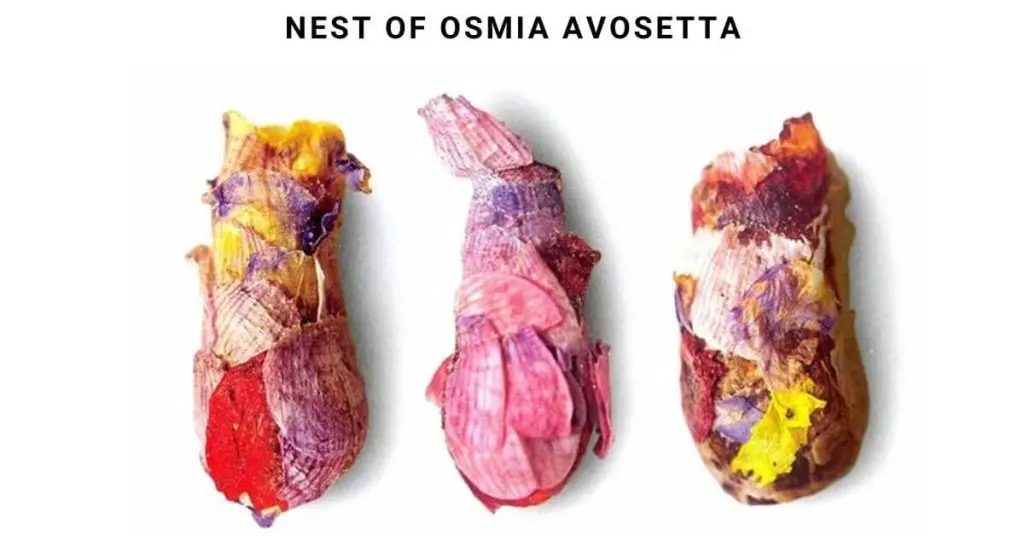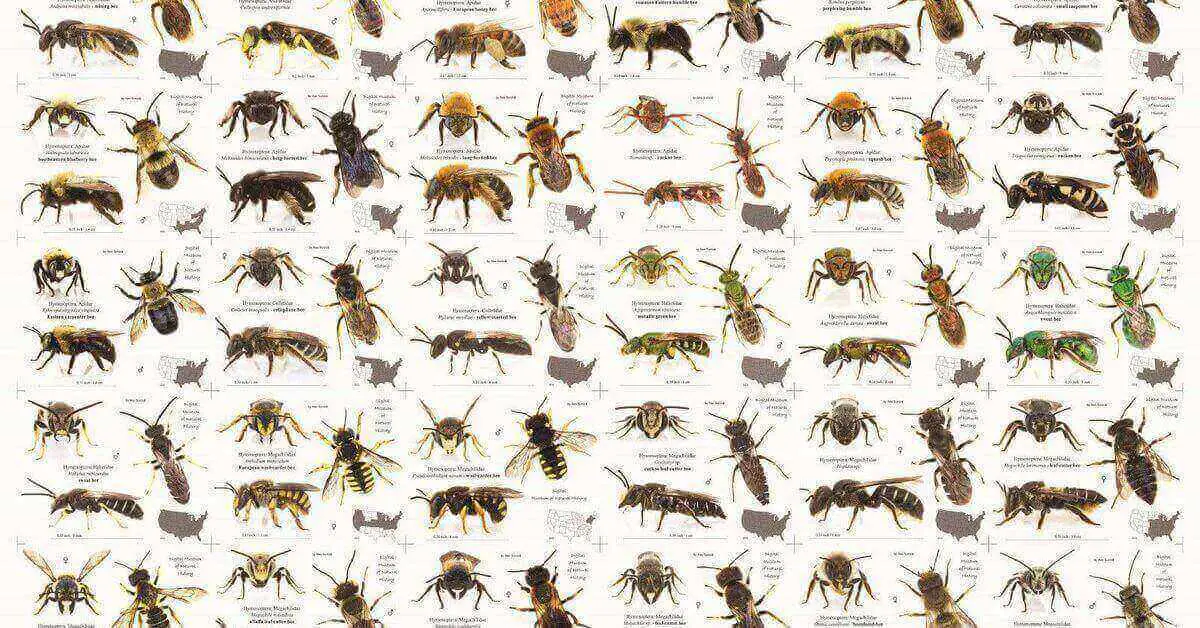Osmia avosetta, also known as the Red Mason Bee, is a species of solitary bee that belongs to the family Megachilidae. They are a beautiful, small-sized bee with distinctive red hairs on their thorax and a shiny black abdomen. In this article, we will discuss the Osmia avosetta in detail, including its sting, nest, lifecycle, and behavior. We will also provide a classification table for this species.
| Kingdom | Animalia |
| Phylum | Arthropoda |
| Class | Insecta |
| Order | Hymenoptera |
| Family | Megachilidae |
| Genus | Osmia |
| Species | Osmia avosetta |
Lifecycle of Osmia avosetta
Osmia avosetta has a short lifespan of a few weeks to a few months. The females emerge from their nests in the spring and mate with males. After mating, the female bee starts to build her nest, and she lays eggs inside the tubes. Each egg is supplied with enough food to last until the larva hatches. The larvae then feed on the stored pollen and nectar until they pupate and metamorphose into adult bees. The adults emerge in the late spring or early summer and repeat the life cycle.
Sting Behavior
Osmia avosetta is a solitary bee, and unlike social bees like honeybees, they don’t have a colony to protect. Therefore, Osmia avosetta is not aggressive and rarely sting humans. Even if they do sting, their sting is not very painful, and the swelling goes away within a few hours.
Nest of Osmia avosetta
Osmia avosetta is a mason bee, which means that they build their nest by using mud or clay. The female bee constructs the nest by collecting mud or clay from nearby sources and forming it into small, cylindrical tubes. They then lay their eggs inside the tubes and seal them with mud or clay.

Behavior of Osmia avosetta
Osmia avosetta is a solitary bee, which means that they don’t live in a colony like social bees such as honeybees. However, they may nest in close proximity to each other, forming loose aggregations. They are active during the day and visit flowers to collect pollen and nectar, which they use to feed their offspring.
Does Osmia avosetta make honey?
No, Osmia avosetta does not make honey. Unlike honeybees, which are social bees that live in colonies and produce honey as a food source, avosetta is a solitary bee that does not produce honey. Instead, they collect pollen and nectar to feed their offspring. The female Osmia constructs individual nests using mud or clay, and lays her eggs inside each nest along with a supply of stored pollen and nectar. When the larvae hatch, they feed on the stored food until they pupate and metamorphose into adult bees.
Related Articles
- Osmia Bees (Mason bees) Life Cycle and Pollination.
- Osmia Lignaria Life Cycle: From Egg to Adult Bee.
- Bees In Florida.Native Bees With Florida.
- Osmia Californica Biography & Identification.
Pollination
Yes, Osmia avosetta is an important pollinator. As a solitary bee, they forage individually and visit a wide variety of flowers to collect pollen and nectar for their offspring. In the process, they inadvertently transfer pollen from one flower to another, aiding in the fertilization of plants and the production of fruits and seeds. Osmia is particularly effective at pollinating crops such as apples, cherries, and almonds. They play a vital role in maintaining the balance of nature and are an important part of our ecosystem.
FAQ’S
What is the diet of avosetta bee?
Avosetta feeds on nectar and pollen, which they collect from a variety of flowering plants.
Why is Osmia avosetta important?
Avosetta is an important pollinator of many wildflowers and crops, including fruit trees and vegetables.
What is being done to protect Osmia avosetta?
Conservation efforts for avosetta include protecting and restoring its habitat, reducing pesticide use, and promoting the planting of wildflowers and other flowering plants.
Is avosetta bee endangered?
Avosetta is not currently considered to be endangered, but like many bee species, it is facing population declines due to habitat loss and pesticide use.
What is the mating behavior of Osmia bee?
Male avosetta use their long antennae to locate females and to defend their territory from other males. After mating, the female constructs a nest and lays her eggs.
Summary
Osmia avosetta is a beautiful and fascinating species of mason bee. They are important pollinators and play a significant role in the ecosystem. With their distinctive red hairs and black abdomen, they are easily recognizable in the wild. Despite their short lifespan, they play a vital role in maintaining the balance of nature.




